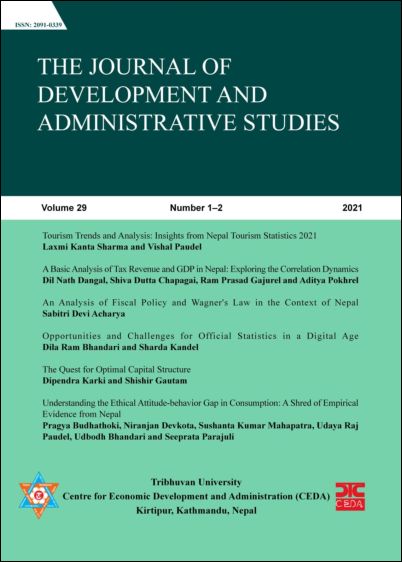A Basic Analysis of Tax Revenue and GDP in Nepal: Exploring the Correlation Dynamics
DOI:
https://doi.org/10.3126/jodas.v29i1-2.68211Keywords:
Gross domestic product, Tax revenue, Growth, direct tax, Indirect taxAbstract
This study investigated the correlation of tax revenue on the economic development of Nepal, focusing on its GDP. To achieve the objective, by utilize time-series macroeconomic data, specifically focusing on GDP and tax revenue from 2000 to 2001 fiscal year to 2020/2021. This descriptive study employs ordinary Least Square regression and correlation coefficient analysis. Data is collected from the Economic Survey Ministry of Finance. The study proposes a model where GDP is a function of tax revenue. The hypothesis suggests a positive relationship between tax revenue and GDP in Nepal. The regression model indicates significance, rejecting the null hypothesis. Tax revenue plays a crucial role in Nepal's GDP. The findings reveal that the P-value is extremely low (p<0.001), indicating that the direct tax revenue and indirect tax revenue are highly statistically significant. There is the existence of both a positive and robust relationship between tax revenue and GDP. Hence, the Government of Nepal should search for a way to boost the revenue from tax revenue by primarily supporting the configurations of networks among all the agencies of government and taxing authorities of the federal level, each province, and local bodies to meet the growth and to facilitate public services for the country.
Downloads
Downloads
Published
How to Cite
Issue
Section
License
The copyright of the accepted articles is reserved by the Centre for Economic Development and Administration (CEDA), Tribhuvan University (TU). No part of the article published in this journal should be reproduced except provided by the law currently in force without the written consent of the centre.




